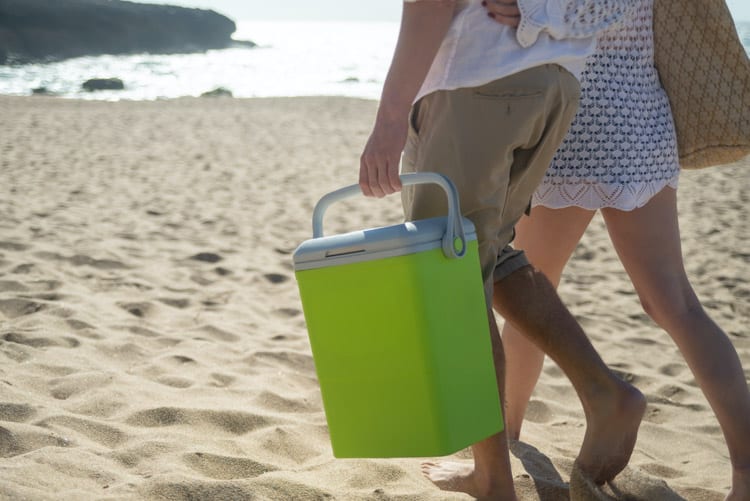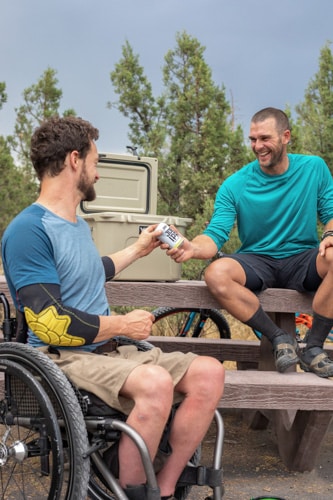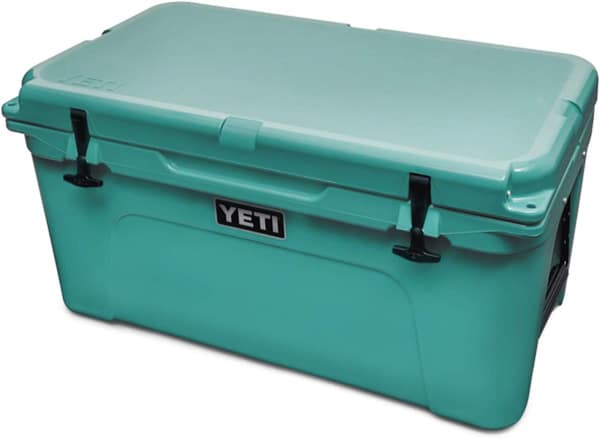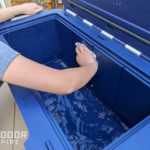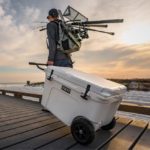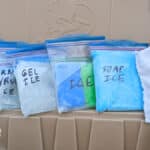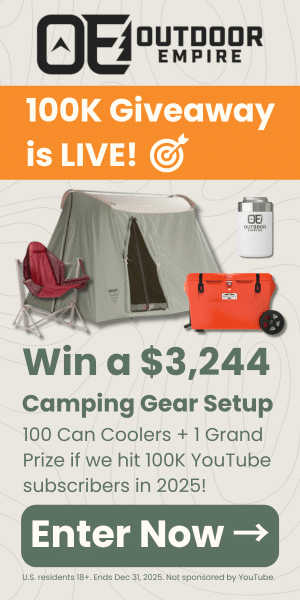Is there a more cleverly designed and ubiquitous storage device than a cooler? They are used the world over by all types of folks. Designed to go wherever we do and to thwart the elements while preserving our perishables, coolers are a valuable and affordable commodity.
When looking for a good cooler, there are many variables to consider. Because there are a million situations in which a cooler is invaluable, let’s go over some different features, then discuss the circumstances during which they might be used.
Though there are many types of coolers capable of holding lots of different things, they all have one thing in common: they keep things fresh.
Related: Best Coolers Reviewed (Budget to Best on The Market)
4 Different Types of Coolers
There are many different types of coolers. There are big coolers and small ones, coolers that you can carry, strap-on or tow, and coolers designed for individuals or groups. We’ll go over the most prolific types that are currently offered.
1. Hard-sided Cooler
Hard-sided coolers have been around for a long time. Metal coolers dominated the scene for years and did quite well, keeping things cold and transportable. They could be heavy, though, and cumbersome.
These days, hard-sided coolers can be made from many types of plastic, resulting in better cooling technologies and extreme durability. From classic blow-molded coolers like your typical sub-$100 Coleman or Igloo, to thick-walled and durable injection-molded coolers from brands like Pelican and OtterBox, you can find hard coolers that vary widely in ruggedness and price.
Hard-sided coolers are great for any application, from a day trip in the mountains, to the beach, to a fishing boat.
2. Rotomolded Cooler
Rotomolded coolers are sometimes referred to as the perfect coolers. They are essentially high-end hard-sided coolers, but since they have grown so much in popularity, they merit a class of their own.
Rotomolding, short for rotational molding, is the means by which plastics are contorted into the desired shape. Large molds filled with plastic powder are heated and rotated on three axes inside of a furnace to produce thick-walled single-piece plastic cooler shells. These shells are then injected with dense foam for added insulation.
Once complete, the coolers are highly durable and high-quality. They also tend to be the most expensive coolers you can buy from reputable brands like YETI.
Rotomolded coolers are best suited for times when you need your items to stay cool for a longer period of time. This might be camping or hunting trips, a hot day of offshore fishing, or a long road trip.
Recommended: Best Rotomolded Coolers Reviewed
3. Soft-sided Cooler
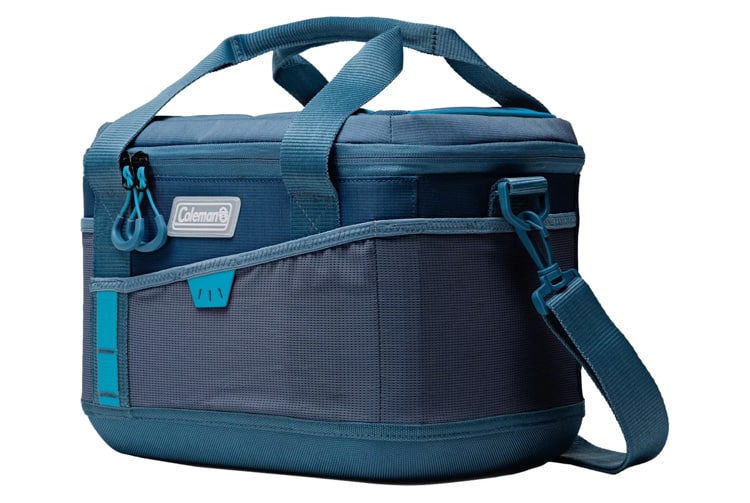
20-quart models can be slung over the body or carried in one hand. Larger models made from thicker plastics will stand up to the elements and hard-sided coolers. Many brands offer combination models that incorporate both types of siding.
Small soft-sided coolers are not appropriate for keeping things cold for multiple days. However, they are good for picnics, taking treats for the soccer team, or transporting groceries home on a hot day.
4. Plug-in Cooler

Important Features in a Cooler
A cooler should be whatever you need it to be. Because coolers come in so many different shapes and sizes and are made from different materials, you should be able to get what you need when you need it.
Starting a new construction job? You’re going to want a small, lightweight cooler bag.
Heading to the beach with the family? You’ll be looking for something bigger, like a 70-quart cooler, perhaps with wheels and a tow handle.
Coolers are made out of things that don’t allow leakage while preserving foods and drinks in any weather. In the olden days, metal was the material of choice. Today, coolers are made of plastic, metal, polyester, nylon, canvas, cotton, polypropylene, etc. They can be hard or soft-shelled, or both.
Be sure to look closely at these three features of a cooler:
- Insulation – Insulation performance is the most important aspect of the cooler. If you want a cooler to retain ice for days on end, a rotomolded cooler is best. A slightly bigger model is also recommended.
- Portability – Consider where you’ll be taking it and how often you’ll need to move it around. You may need a couple of different types of coolers for different scenarios, such as a hard cooler with wheels for camping and a soft-sided backpack cooler for beach days.
- Storage space – The size of cooler you’ll need will largely depend on the size of your group and the duration of your trips.
Cooler Size Guide
A small, 20-quart cooler could hold food for 1-2 people for a couple of days.
A medium, 40-quart cooler could hold food for the same 2 people for 4-5 days. Or it could hold food for 1 person for a week. If you’re a family of 6, the medium cooler could hold enough food for 1-2 days.
A large, 60-quart cooler (or larger) could hold food for 2 people for over a week. It could also hold food for a family of 6 for 2-3 days.
The Yeti Tundra 65 Cooler offers the space and technology that will keep things cold for days. It features a Fatwall design that will hold up to two inches of Permafrost insulation and commercial-grade polyurethane foam. In short, these details keep the elements out and the freshness in.
Best Cooler Brands
There are many brands of coolers. YETI, Igloo, RTIC, Orca, Dometic, and Coleman produce top-of-the-line coolers. Each offers all of the articles, in some form or other, of what we’ve come to expect from well-made coolers.
Among other details, these brands sell coolers with straps, handles, wheels, sliding tops, drainage plugs, internal shelves, and come in hard and soft sides.
YETI
YETI coolers come in all sizes, from handhelds to tow behinds. They specialize, however, in rotomolded coolers and are known as some of the best. The company’s easy transport models come in both hard and soft sides and feature zippered flip tops and straps for easy transport.
The YETI Tundra 65 is a large hard-sided rotomolded cooler that is as much at home holding the fish you catch on the lake or filled with ice and beverages at the backyard barbecue. It can come with attachable sliding feet, YETI ice molds, and even a fishing rod holder.
Igloo
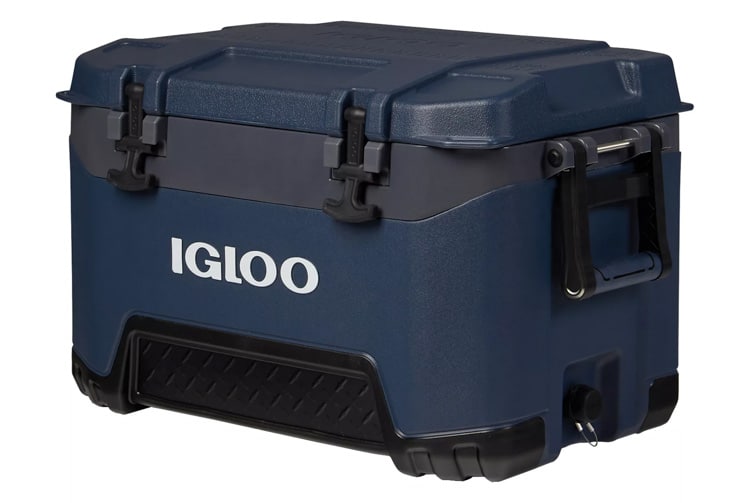
The Igloo Playmate is probably what older folks remember from the last century. These are hand-held models with sliding tops that workers everywhere use for their lunches. Igloo offers so much more, though.
Today Igloo makes all kinds of coolers from inexpensive models, to injection molded, to rotomolded and everywhere in between.
RTIC
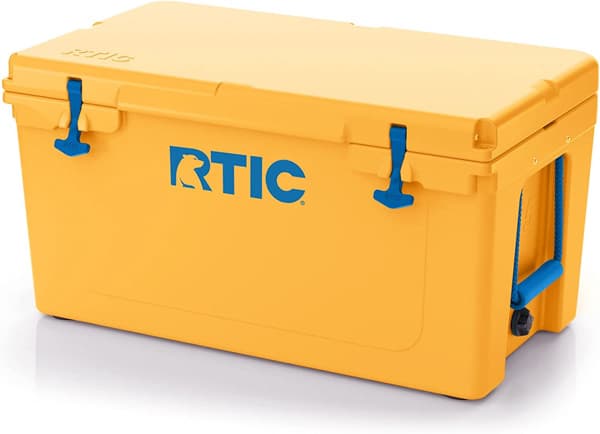
A 52-quart Ultra-Light model weighs about 21 pounds empty and could cost a couple hundred dollars. This can fit into a trunk and service a family on a trip. It is perfect for beach days, road trips, camping, or boating trips.
Orca

Dometic
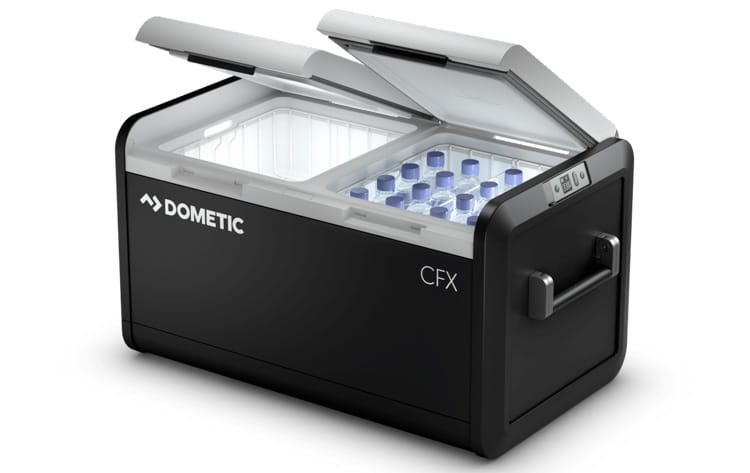
The Dometic CFX3 75DZ powered cooler runs at about $1,400. Its connectivity ensures that nothing will go bad on your watch. It’s more or less a little refrigerator and is perfect for long road trips. The powerful compressor cooling technology can be set to -7 degrees.
This smart cooler can be controlled by your phone by downloading an app, at which point you can set different parts to different temperatures.
Coleman
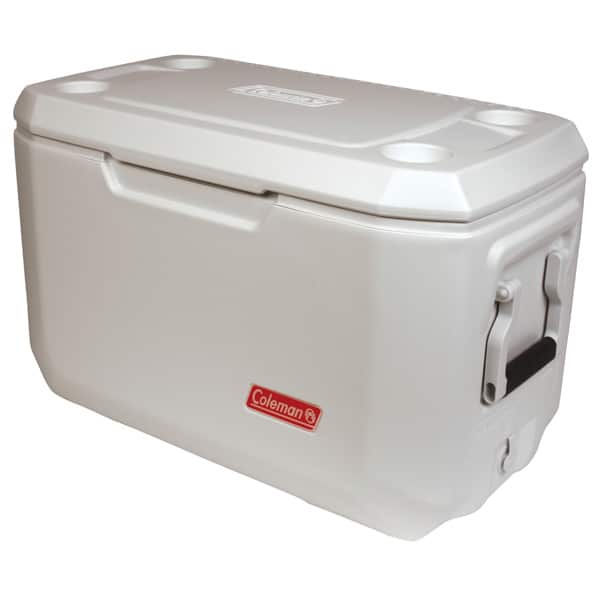
Final Thoughts
Picking the right type of cooler for your next adventure can make all the difference. There’s no need to lug around a 60-quart rotomolded cooler for a few snacks at the ball game when a soft-sided cooler would do the trick. But you’ll sure want that rotomolded cooler on your weekend camping trip!
With the smart purchase of a couple of different types of coolers, you’ll be set to go wherever adventure leads you. And you’ll have some nice, cold beverages to come along with you.
Good to know:
How to Properly Clean and Maintain a Cooler (Even Stains and Smells)


